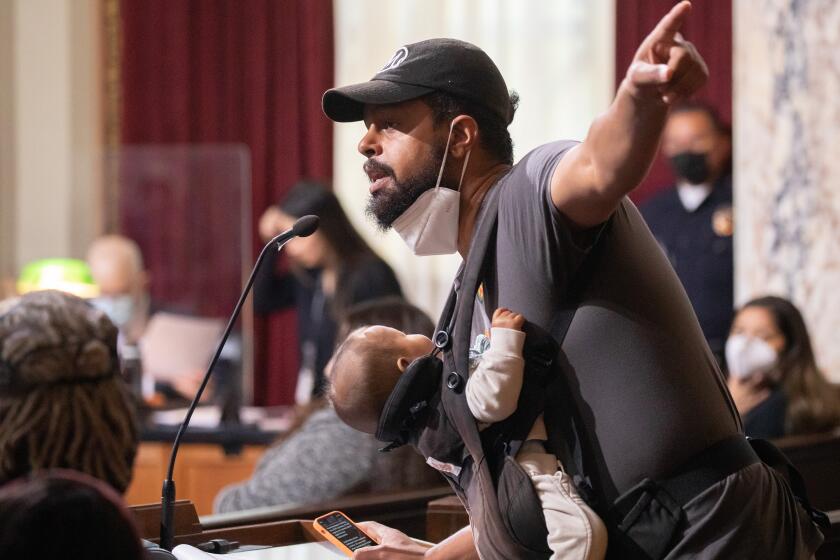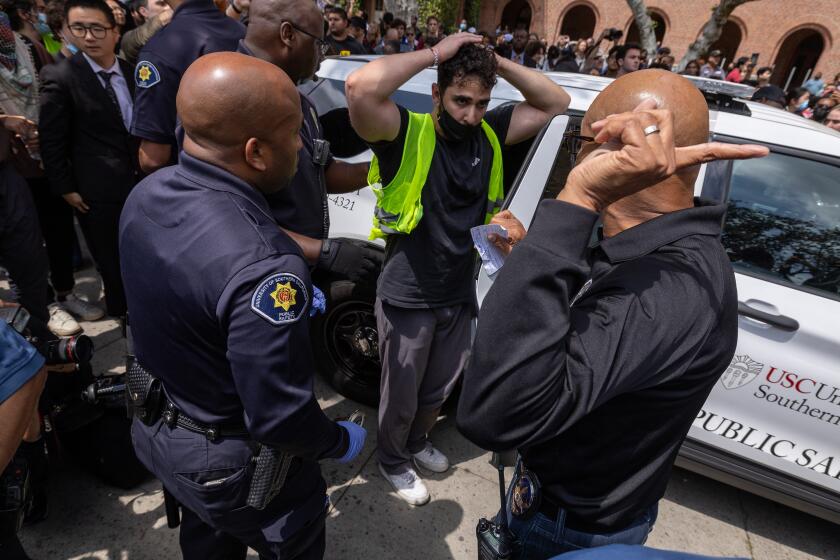Doctors’ stance on pot is sick
Let’s get this straight: The California doctors lobby believes that marijuana has questionable value as medicine. Pot users risk damage to body and brain. But the drug should be legalized?
In case you missed it, the California Medical Assn. last Friday officially recommended the legalization and regulation of weed.
It comes as the California marijuana industry is gearing up for another legalization effort next year at the ballot box.
“There simply isn’t the scientific evidence to understand the benefits and risks of medical cannabis,” a CMA news release quoted Dr. Paul Phinney of Sacramento, the organization’s board chairman.
“We need to regulate cannabis so that we know what we’re recommending to our patients. Currently, medical and recreational cannabis have no mandatory labeling standards of concentration or purity. First we’ve got to legalize it so that we can properly study and regulate it.”
Whatever happened to studying a drug first to determine its benefits and risks, then deciding whether it’s safe enough to legalize? I couldn’t get a satisfactory answer. But the CMA thesis is that marijuana research is inhibited because the federal government classifies pot in the same illegal category as heroin and LSD.
The CMA Board of Trustees adopted the “legalize pot” position on behalf of the association’s 35,000 physician members. Its action was based on a 14-page “white paper.”
“It really should be called the Cannabis Medical Assn.,” says Covina Police Chief Kim Raney, vice president of the California Police Chiefs Assn. “It’s probably one of the most irresponsible, disgraceful position papers I’ve ever read.”
What raised my eyebrows was a repeat of the old canard about how locking up stoners eats up too much tax money.
The CMA report lamented “the diversion of limited economic resources to penal system costs and away from the other more socially desirable uses such as funding healthcare, education, transportation, etc.”
That’s a stretcher, at least in California.
Our prisons aren’t exactly bulging with people who were sent there for growing or selling grass, let alone ingesting it. Fewer than 1% of the inmates have been sentenced for marijuana or hashish crimes of any sort, according to state prison data.
They total 1,325 out of 164,156. If you do the math — each prisoner costing nearly $50,000 a year — it isn’t chump change: around $66million. But it’s hardly noticeable in a $10-billion prison budget.
“With all the strains on our resources, going after small levels of marijuana possession is not a priority,” says Scott Thorpe, chief executive of the California District Attorneys Assn. “To go to prison for a drug offense, it’s going to be very, very, very rare that it’s for a first offense. Any drug.”
Back in the 1970s, when Jerry Brown was governor the first time, California made possession of less than one ounce of marijuana — about a sandwich baggie full — a low misdemeanor punishable by a fine. Last January, that penalty was reduced even further to an infraction, equivalent to a traffic ticket.
People run afoul of the law when they grow crops or possess pounds of pot to sell, unless it’s for so-called nonprofit medicinal purposes. California voters sanctioned that 15 years ago.
Although it’s still against federal law to toke up, the feds were turning the other way and ignoring medicinal use until the California pot industry became brazen. Cultivation and storefront dispensaries mushroomed, often in defiance of local ordinances. Now the Obama administration is starting to crack down on the worst offenders.
I asked the author of the CMA report about the implication that incarcerating potheads was draining the state treasury. He sidestepped.
“The worry for us as physicians is not cost, it’s human health,” said Dr. Donald Lyman, a state public health department official. Lyman got state permission to head up the CMA report on his own time, he emphasized.
“We don’t know what’s in the cannabis. We don’t know where it comes from. It needs some regulatory structure.”
Under California law, doctors can write a “recommendation” — it’s not called a prescription — for medicinal marijuana. Asked if he felt the law was being abused, Lyman replied: “Clearly yes. People out there are writing recommendations right and left without any justification.”
The law “inappropriately places physicians in the role of gatekeeper” between pot users and the product, he asserted.
But it’s voluntarily. There’s no one forcing doctors to stand at the gate. They don’t have to write “recommendations.”
The CMA report notes that in the last decade there have been a dozen U.S. clinical trials and more than 20 studies worldwide investigating the therapeutic benefits of pot smoking. “Current data have shown that the medical indications for cannabis are very limited,” the report says.
“Cannabis may be effective for the treatment of pain, nausea, anorexia and other conditions, but the literature on this subject is inadequate … and cannabis side effects may not be tolerated.”
OK, still, if someone feels the healing need for marijuana, it can legally be acquired in California.
How about the risks?
The CMA report cites assertions by the National Institute on Drug Abuse that “cannabis use can result in distorted perceptions, impaired coordination, difficulty thinking … and problems with learning and memory.”
It also warns of “long-term personal health problems such as addiction, anxiety, depression, psychosis, respiratory problems and heart attack.”
And, oh yes: “Adolescents and young adults have a much greater vulnerability to the toxic effects of cannabis on the brain.”
Plus there are “second-hand effects by posing health risks to those members of the public around the user.”
That’s enough study for me. One clandestine baggie-full at a time should suffice.
More to Read
Start your day right
Sign up for Essential California for news, features and recommendations from the L.A. Times and beyond in your inbox six days a week.
You may occasionally receive promotional content from the Los Angeles Times.







